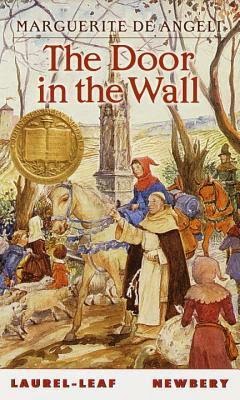Goodreads synopsis: The bells clang above plague-ridden London as Robin lies helpless, cold, and hungry. The great house is empty, his father is fighting the Scots in the north, his mother is traveling with the Queen, and the servants have fled. He calls for help but only the stones hear his cries. Suddenly someone else is in the house, coming towards Robin. It is Brother Luke, a wandering friar, who takes Robin to St. Mark's Monastery, where he will be cared for until his father sends for him.
At last, a message comes--Robin is to meet his father at Castle Lindsay. The journey is dangerous, and the castle is located near the hostile Welsh border. Perched high in the hills, the castle appears invincible. But it is not. Under the cover of a thick fog the Welsh attack the castle. And Robin is the only one who can save it.
Insofar as I can put myself in the place of a child in the late 1940s or early 1950s, this seems like a solid choice for the award. It is certainly informative about medieval England, but not in a dry or didactic way, and it has quite overtly religious overtones, but that isn't terribly surprising for the time. Above all, though, it is a coming-of-age story with a good degree of adventure and excitement.
The character of Brother Luke, the monk who becomes Robin's guardian and friend, is lovely, and much of his advice would not go amiss when given to children even today: that busy hands make time pass more quickly; that when things look bad you should still be thankful for what you have; that you should get enough rest so "weariness shall not give thee excuse for discouragement" (i.e. you will not get frustrated whittling and fling a chisel at Brother Matthew's head); and that if you follow any wall far enough, you will find a door in it.
Robin himself is a well-drawn character as well, and follows a satisfying path from spoiled, petulant nobleman's son to confident, brave knight's apprentice. As you might expect, women in the book are largely relegated to cooking, weeping and sitting on thrones or hiding in inner rooms when castles are under attack.
 |
| Photo by cmh2315fl |
From what I can see, she wrote upwards of twenty books, of which I have read.... this one. I'm thinking I might have to check out Yonie Wondernose, though.



1 comment:
Hmmm...this one looks interesting! I know why I wouldn't have read it as a child - I almost only read books that featured female main characters.
Post a Comment